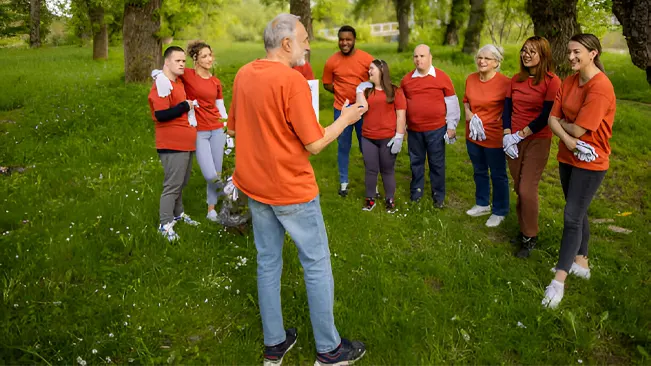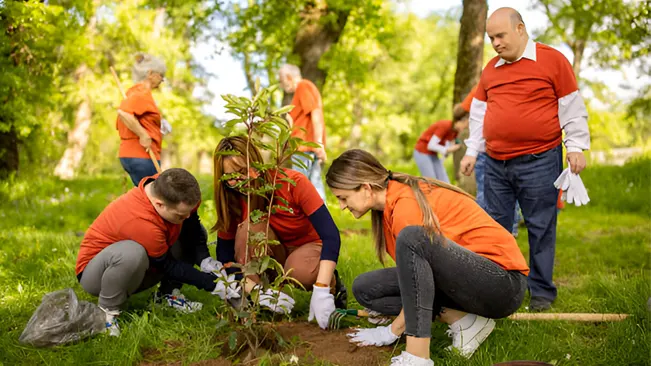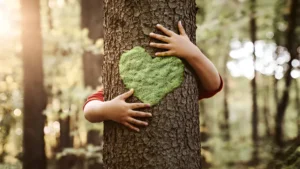10 Simple Ways to Engage Your Community in Urban Forestry
- September 5, 2024
- 0 comment
Urban forestry plays a crucial role in enhancing the quality of life within our cities and towns. The presence of trees in urban areas provides a multitude of benefits, from improving air quality and reducing heat to increasing property values and creating more pleasant environments for everyone. However, these benefits can only be fully realized when the local community is actively involved in the care and management of their urban forests.

By engaging community members in various urban forestry activities, we can foster a sense of shared responsibility, strengthen neighborhood bonds, and ensure the long-term health and sustainability of our green spaces. Below are ten practical and accessible ways to get your community involved in urban forestry, helping to create a greener, healthier, and more vibrant place to live.
Understanding Urban Forestry
Definition and Importance of Urban Forestry
Urban forestry refers to the care and management of tree populations in urban environments. Trees play a critical role in maintaining ecological balance, improving air quality by absorbing pollutants, providing shade that reduces the urban heat island effect, and offering habitats for wildlife. They also enhance the aesthetic appeal of neighborhoods, increase property values, and contribute to the overall well-being of residents.
The Role of Community Engagement in Urban Forestry
Community engagement is essential for the success of urban forestry initiatives. When community members are involved, they are more likely to take pride in and care for their local green spaces. Engaged communities are also better equipped to advocate for the preservation and expansion of urban forests, ensuring that these vital resources continue to thrive. Moreover, involving residents in urban forestry projects fosters a sense of ownership and responsibility, which can lead to long-term environmental stewardship.
10 Simple Ways to Engage Your Community in Urban Forestry
- Organize Tree Planting Events
Tree planting events are a straightforward and effective way to engage the community in urban forestry. Partner with local organizations, such as environmental groups or schools, to organize these events. Promote the event through local media, social media, and community bulletin boards to attract participants.

Providing participants with information on the importance of trees and proper planting techniques can also make the event educational and impactful. Additionally, consider scheduling tree planting events around significant dates, like Arbor Day, to generate more interest and participation.
- Educational Workshops and Seminars
Hosting workshops and seminars on topics related to urban forestry can help educate the community about the benefits of trees and how to care for them. These events can cover a range of topics, including tree identification, the benefits of urban forests, and proper tree maintenance practices. Tailoring workshops to different demographics, such as school children, seniors, or local gardeners, can ensure that the information is relevant and accessible. By making these sessions interactive and hands-on, participants are more likely to retain the knowledge and apply it in their daily lives.
- Create Community Gardens
Community gardens offer a unique opportunity to blend urban forestry with gardening. These gardens can include a variety of plants, including trees, that provide shade, fruit, and other benefits.
Establishing a community garden involves selecting a suitable location, securing funding, and organizing volunteers to help with planting and maintenance. Community gardens not only improve the local environment but also serve as gathering spaces where residents can connect with nature and each other.
- Host Tree Walks and Tours
Tree walks and tours are an excellent way to introduce community members to the trees in their local area. These guided tours can be led by knowledgeable individuals, such as local arborists or naturalists, who can share information about different tree species, their ecological benefits, and their historical significance. To make the experience more engaging, consider incorporating interactive elements, such as tree identification challenges or discussions on tree care. These tours can also highlight areas in need of more trees, encouraging participants to get involved in future planting efforts.
- Implement a Tree Adoption Program
A tree adoption program encourages residents to take responsibility for the care and maintenance of specific trees in their neighborhood. By adopting a tree, community members develop a personal connection with the urban forest and are more likely to ensure its well-being.
This program can involve regular check-ins, where adopters report on the health of their tree, and workshops on tree care to provide ongoing support. Tree adoption programs not only foster a sense of ownership but also help spread the workload of tree maintenance across the community.
- Use Social Media for Awareness and Engagement
Social media is a powerful tool for raising awareness about urban forestry and engaging the community. Platforms like Facebook, Instagram, and Twitter can be used to share success stories, promote upcoming events, and educate the public about the benefits of trees. Creating a dedicated social media page or group for your urban forestry efforts can serve as a hub for information and discussion. Encouraging community members to share their own experiences and photos related to urban forestry can further boost engagement and create a sense of shared purpose.
- Collaborate with Schools for Tree-Based Projects
Schools are ideal partners for urban forestry projects because they can involve large numbers of students and teachers in tree planting and care activities.
By working with schools, you can organize tree planting events on school grounds, integrate urban forestry topics into the curriculum, and engage students in hands-on projects like tree monitoring or creating educational materials about trees. These activities not only enhance students’ understanding of the environment but also help instill a lifelong appreciation for nature.
- Involve Local Businesses
Local businesses can play a significant role in supporting urban forestry efforts. They can sponsor tree planting events, provide funding for urban forestry projects, or encourage their employees to volunteer. In return, businesses can benefit from the positive publicity associated with supporting environmental initiatives. Encouraging businesses to adopt green practices, such as incorporating trees into their landscaping or reducing their carbon footprint, can also contribute to the overall health of the urban forest.
- Establish a Citizen Science Program
Citizen science programs engage community members in collecting data on trees and other aspects of the urban environment. Volunteers can be trained to monitor tree health, report on tree conditions, and participate in research projects related to urban forestry.
These programs not only provide valuable data for urban forestry management but also give participants a deeper understanding of the urban forest and its challenges. By involving residents in scientific research, you can foster a greater appreciation for the complexities of urban forestry.
- Celebrate Arbor Day and Other Tree-Centric Events
Arbor Day and other tree-centric events provide an excellent opportunity to engage the community in urban forestry. These events can include tree planting ceremonies, educational booths, and family-friendly activities like tree climbing or nature crafts. By celebrating trees and their importance to the community, these events can help raise awareness and inspire more people to get involved in urban forestry efforts. Promoting these events widely and involving a variety of community groups can ensure a large and diverse turnout.
Overcoming Common Challenges in Community Engagement
Addressing Apathy and Lack of Interest
One of the biggest challenges in engaging the community in urban forestry is overcoming apathy or lack of interest. To address this, it’s important to communicate the tangible benefits of urban forestry, such as improved air quality, reduced energy costs, and enhanced property values. Highlighting success stories from other communities and showcasing the immediate and long-term impacts of urban forestry projects can also help generate interest.
Managing Logistical Issues
Logistical challenges, such as securing funding, organizing volunteers, and obtaining necessary permits, can also hinder urban forestry efforts. To overcome these challenges, it’s essential to establish strong partnerships with local organizations, government agencies, and businesses. These partners can provide resources, expertise, and support to help navigate logistical hurdles and ensure the success of urban forestry initiatives.
Conclusion
Engaging your community in urban forestry is not only essential for the health of your local environment but also for fostering a sense of community pride and stewardship. By implementing these ten easy strategies, you can inspire residents to take an active role in caring for their urban forest, ensuring that it thrives for generations to come. Now is the time to take action and make a positive impact on your community and the environment.
Frequently Asked Questions (FAQ)
- What is urban forestry?
Urban forestry refers to the care and management of trees in cities and towns to improve air quality, reduce heat, and enhance community spaces. - Why is community involvement important in urban forestry?
Community involvement ensures the success of tree management initiatives by fostering a sense of ownership, leading to better care and long-term sustainability of green spaces. - How can I organize a tree planting event in my community?
Partner with local groups, secure funding, promote the event, and provide training on tree planting to engage and educate participants. - What are some effective ways to educate the public about tree management in urban areas?
Host workshops, use social media to share information, and collaborate with schools to integrate tree care topics into their programs. - How can schools contribute to tree care initiatives?
Schools can organize tree planting, include related topics in their curriculum, and involve students in hands-on projects. - What is a tree adoption program, and how does it work?
Residents adopt a tree, committing to its care, which fosters personal responsibility and ensures the tree’s health. - How can social media be used to promote urban tree care?
Social media can raise awareness, promote events, and engage the community by sharing educational content and success stories. - What challenges might arise in engaging the community, and how can they be addressed?
Challenges like apathy and logistics can be overcome by highlighting benefits, sharing success stories, and building partnerships. - How can local businesses support urban tree initiatives?
Businesses can sponsor events, provide resources, and encourage green practices, benefiting both the community and their image. - What is citizen science, and how can it be applied to urban tree care?
Citizen science involves residents in tree monitoring and data collection, aiding urban tree initiatives and increasing community engagement.

Jordan Blake
Forestry AuthorJordan Blake is a forestry expert with over 15 years of experience in arboriculture and community education. Passionate about sustainable forest management, Jordan regularly writes for Forestry.com and Tree Care Magazine. Holding certifications in tree health assessments and urban forestry management, Jordan conducts workshops to educate the public on sustainable practices. Jordan has a degree in Environmental Science and enjoys hiking and photography in their free time.


Leave your comment